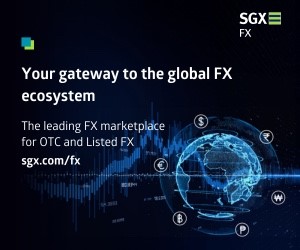The Last Look…
Posted by Colin Lambert. Last updated: April 19, 2023
Over the past year, there have been several moves by various FX platforms to increase the level of transparency around how they operate, and, occasionally, a product launch or two. This may look like a normal course of business, and to a degree it probably is, but I sense that some firms smell an opportunity to build both their client base and their volume numbers at the expense of competitors. This is a change from previous years when competition was most often for new business, however this time there is a new driver – one that may show up in what seems to be quite a range of performance over the last year.
Historically, in FX volume terms, a rising tide has lifted all ships – some platforms were in “growth mode” and naturally outstripped both broader market growth and the competition – but generally reported volumes rose and fell in unison, albeit against a backdrop of a decline in the influence of the “primary” venues.
Last year is probably the first in which all platforms were at the “mature” stage, after FXSpotStream added algos in the second half of 2021 (although there was undoubtedly still a one-off boost from algos on the 2022 data), and it is notable that the relative performances are quite diverse – although surprisingly perhaps, not along model lines.
Using the spot data from the seven regional FX committees to report turnover, all platforms managed to outstrip the year-on-year increase of 15.1% with the exception of EBS, which rose 7.6% from April 2021 to April 2022. Performance gains in April 2022 were led by Euronext FX at +37.4%, FXSpotStream at +25.8%, 360T at +22.9%, LSEG’s Refinitiv at +21.4% and Cboe FX at +20.1%.
Looking at the October data, only FXSpotStream (+36.8%) and Cboe FX (+24.5%) managed to outstrip the FX committee gains of +19.3%, with EBS at +14.5%; Refinitiv at +12.4%; Euronext FX at +11.4% and 360T at +7.2% under-performing.
There are some outliers in these data, for looking at 2021-22 as a whole, Refinitiv grew closer to its October data than April at +13.5% year-on-year, as did Euronext FX, although it was a little further off in both months, the 21-22 growth being +17.3%. EBS at +7.1%, slightly underperformed on the whole year also.
What stands out in this data is the absence of a dominant model performance – although it is not helped by the lack of transparency at some platforms. There may be no surprise in the primaries underperforming the FX committee data (LESG FX just slightly), this has been a story for some time, but 360T is largely a relationship venue and that is a surprise given the narrative of a rise in relationship, disclosed trading.
There are platforms who provide nothing in the way of performance data, although I suspect this is now becoming a detriment to their ability to attract new clients
It would, of course, be easier to understand this trend in the industry is there was more granular data around platform performance – for example we have no idea whether the growth at LSEG is FXall or Matching, indeed some in the industry continue to question how those numbers are actually calculated. Equally, is EBS’ growth coming on Market or Direct or another channel? Is 360T’s relative under-performance a factor of its ECN GTX, or lower hedging by its core customers? Finally, how much of FXSpotStream’s volume is actually spot?
These are important questions for clients seeking to adopt a platform or add a second as a form of technology redundancy, but frankly it is very hard to know.
At this stage, I should make a point of praising these platforms for actually publishing any data at all, for there are others out there who provide nothing, although I suspect this is now becoming a detriment to their ability to attract new clients. It may well be coincidental that initially Cboe FX, and then Euronext FX made big strides in increasing transparency on their venues, and both had good 2022s, but it may not be.
Some venues seem to believe there is a link in transparency and more business. 360T for example, defaulted its ECN to Code-only liquidity, and has recently started publishing data on currency pair volumes, round-trip times on its streaming trades, as well as volume by centre and hour of the day (the latter of which I particularly like for some reason!)
Certainly talking to people in the market about Cboe FX over the past few months there is an appreciation that the firm is provided valuable data around the percentage of anonymous volume and the fill rates on non-firm. Equally, Euronext’s move to provide much of the same data (there is no anonymous/disclosed breakdown), with fill rates broken down by mechanism, and both firms providing firm liquidity data is being viewed positively.
The big story underpinning this nascent trend – if it is indeed that – is the buy side taking a much closer look at their FX business. This started with simple best execution reviews, but has extended in many firms to a look at the technology they deploy. Most platforms invest in their tech stack on a regular basis, so unless they are having outages, which really hurt in this business segment, it is really a matter of how the platform operates. One outcome of these reviews of business have been clients more willing to embrace different ways of trading, or at the very least adding some redundancy of execution to their workflow.
Connectivity between venues and downstream systems has never been better, and continues to improve, meaning there is, to a degree, an unbundling of execution and workflow.
This makes it important for platforms to be transparent in the way they operate, starting with volumes. The sense is there is a lot more business up for grabs over the next year or two than there has been for some considerable time, but these clients want to know if a venue operates, for example, largely in an anonymous environment? People at prospective taker firms don’t have a great deal of time on their hands, so it is natural that they will talk to those venues with the data already available publicly – that saves time for the more important discussions and enquiries about LPs and their individual behaviour.
If these liquidity consumers already know how much volume is anonymous, what the average non-firm fill rate is, how much of the volume on the platform is actually spot, it saves them time and probably gives those venues a head start. More transparency around these issues would also, as a side note, nip some of the more aggressive utterances from the rumour mill about how badly a certain platform might be doing in the bud!
Someone at a platform that wasn’t publishing data once asked me why I thought it was important to know volumes in a bilateral, disclosed, environment? Aside from the factor of a client looking to do decent size knowing there will be LPs happy to price them in size, and that the trade will not stand out like a sore thumb, if volumes are not good (or published), then this can say something about the trading environment and the rules governing that venue, as well as the LPs’ level of comfort in quoting thereon.
Conduct could become the only differentiator for venues, after all, next to no-one charges the takers and who has unique liquidity providers any more?
The relative performance of the platforms will be interesting to compare when the April 2023 data is released by the FX committees, but for now at least, looking at an admittedly small data set, there seems to be some evidence that the more open you are as an ECN at least, the more attractive you are to the all-important liquidity consumers. This could also become the case for the disclosed, relationship-based platforms as well.
It is a great thing that behaviour and environment are growing in importance for clients looking at their venues (as indeed they are for LPs who are being increasingly choosy over how they stream to different platforms). This is not, however, something that will be a lasting factor, it is just at this time there seems to be more business up for grabs thanks to the reviews, and those with the business to do are looking for the differentiators.
In such an environment, and looking across all venues, the factors discussed here are probably the only differentiator. After all, next to no-one charges the takers and who has unique liquidity providers any more? Workflow will remain hugely important, but as that world becomes more open and inter-connected, even that will disappear. And before we get carried away by transparency, this too will become more commoditised and at that time the differentiator will be one that no platform wants – a lack of transparency over how it operates.



